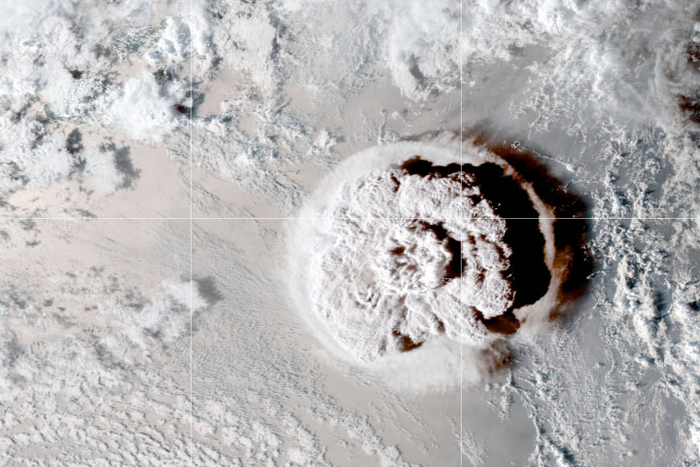Tonga eruption generated gravitational waves circling the globe
The Hunga Tonga-Hunga Ha’apai submarine volcano eruption was among the most powerful every recorded.

Your support helps us to tell the story
From reproductive rights to climate change to Big Tech, The Independent is on the ground when the story is developing. Whether it's investigating the financials of Elon Musk's pro-Trump PAC or producing our latest documentary, 'The A Word', which shines a light on the American women fighting for reproductive rights, we know how important it is to parse out the facts from the messaging.
At such a critical moment in US history, we need reporters on the ground. Your donation allows us to keep sending journalists to speak to both sides of the story.
The Independent is trusted by Americans across the entire political spectrum. And unlike many other quality news outlets, we choose not to lock Americans out of our reporting and analysis with paywalls. We believe quality journalism should be available to everyone, paid for by those who can afford it.
Your support makes all the difference.The Hunga Tonga-Hunga Ha’apai submarine volcano eruption on 15 January generated gravity waves that circled the globe six times, and reverberated around the planet for 12 hours.
That’s among the findings in a new paper published Thursday in the journal Nature.
“This was a genuinely huge explosion, and truly unique in terms of what’s been observed by science to date,” Corwin Wright, a research fellow at Centre for Space, Atmospheric and Oceanic Science at the University of Bath and lead author of the paper said in a statement. “We’ve never seen atmospheric waves going round the whole world before, or at this speed — they were travelling very close to the theoretical limit.”
The waves were clocked at between 238 and 269 meters-per-second in the stratosphere, the researchers note in the paper.
The explosion that set the atmosphere ringing was enormous: the Hunga Tonga-Hunga Ha’apai eruption at 5.14pm local time generated a plume of steam and ash 50 kilometers — 30 miles — high, which became the biggest source of gravity waves on the planet for the next 12 hours.
“Our study nicely shows how the striking display of global waves is driven by the huge amounts of seawater vaporised during the eruption,” study co-author Scott Osprey of the National Centre for Atmospheric Science at the University of Oxford said in a statement.
The researchers will continue studying the explosion, looking to use it to better understand its impact on weather and climate foing foward.
“My gut feeling is that there is more to come from this eruption,” Dr Osprey said in a statement. “As the exceptional amount of water vapour spreads throughout the stratosphere, eyes will turn to the Antarctic ozone hole and just how severe it will be in the spring.”
Join our commenting forum
Join thought-provoking conversations, follow other Independent readers and see their replies
Comments